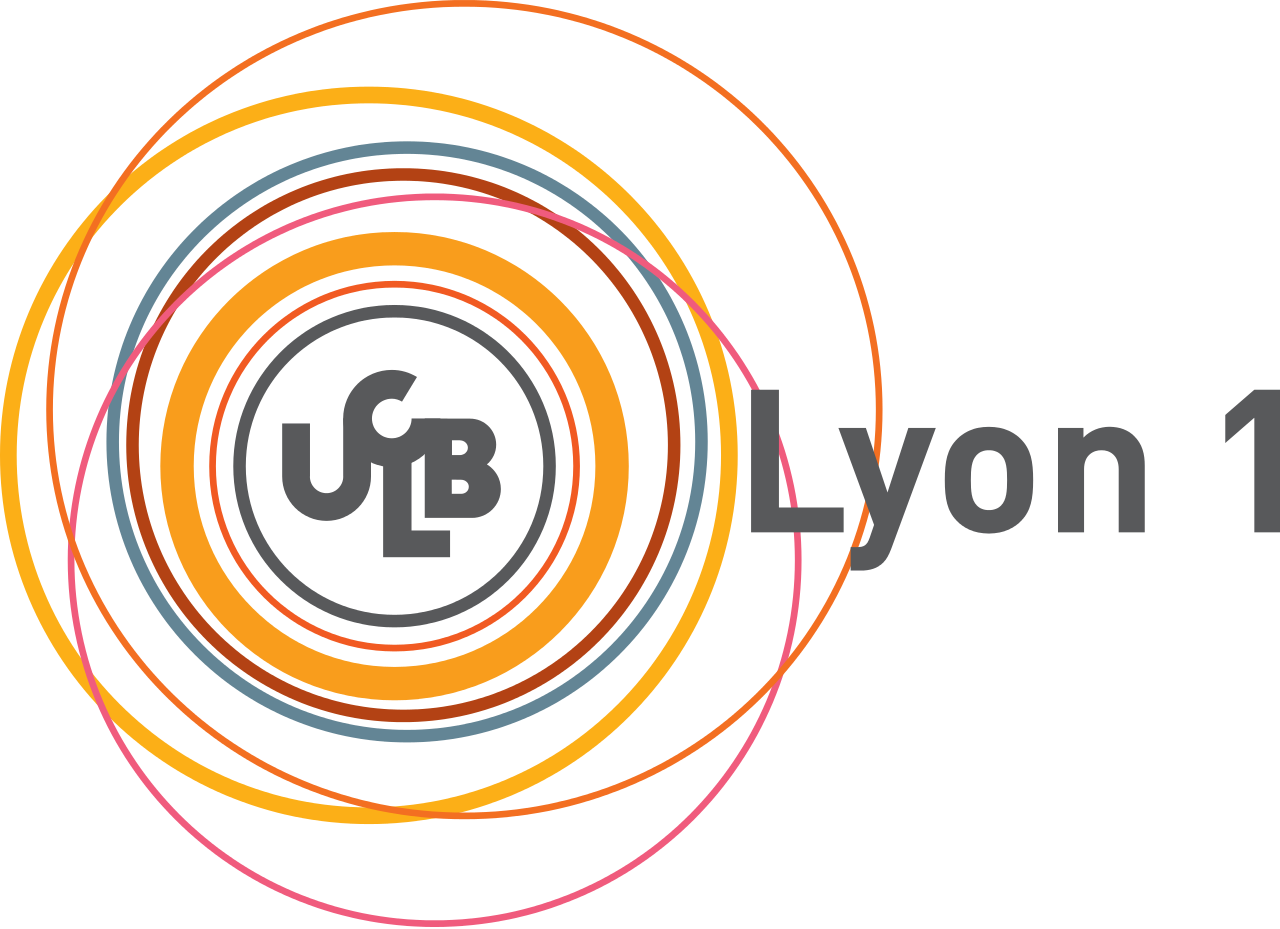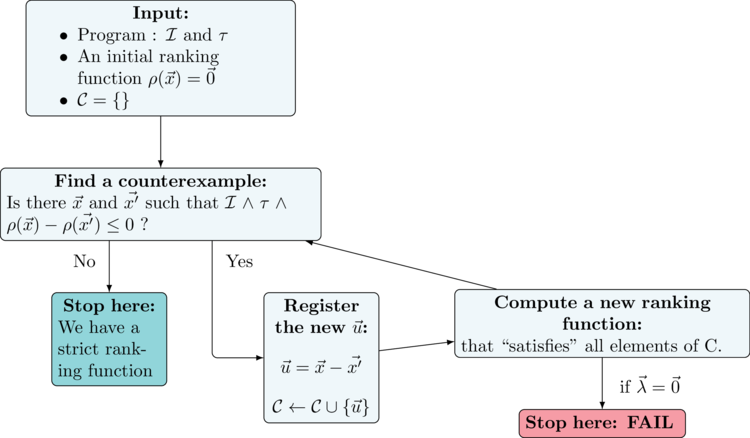Scientific Focus


AERES's visit
Laure Gonnord, 18 nov. 2014
Who am I ?
Assistant Professor since 2009
Univ Lille 1 / LIFL
since sept 2013 : Univ Lyon 1 / LIP
Research Topics
Quantitative analysis of programs
Numerical invariant generation for safety
Formal methods for Software Engineering
Reactive systems: synchronous design
Compilation: scheduling, termination of programs
Zoom : Termination of programs
Why ?
Reactive systems
Proving full correction
Because termination is related to scheduling
The big picture
Given a program
//N>0
i = N;
while(i>0)
{
j = N;
while(j>0) j--;
i--;
}Compute a model (or intermediate representation)

Prove termination of the model.
From Hoare rules to ranking functions
- Hoare rule for total correctness:
- \(\frac{\{t=z \mbox{ and }{t\in D} \mbox{ and } P \mbox { and }B\}S\{P\mbox{ and }t<z\mbox{ and }t\in D\}}{\{\mbox{P}\} \mbox{while B do S done} \{\mbox{not B and P}\}}\)
- with \((D,<)\) well founded
- In our case:
- \(D=(\mathbb{N}^d,<_{lex})\) and
- we look for \(\rho(k,-)\) positive and strictly decreasing.
- we need (numerical) invariants \({\cal I}_k\)!
Algorithm (Alias, Darte, Feautrier, Gonnord 2010) :
From the program representation, we build a system of constraints:
- \(\rho\) is positive : \(\rho(k,\vec{x})\geq 0\) on \({\cal I}_{k}\)
- \(\rho\) is decreasing : \(\vec{x'}-\vec{x^{}}\in \tau \Rightarrow \rho(dest,\vec{x'})-\rho(src,\vec{x^{}})<0\)
We transform it into a Linear Programming instance
We solve.

Issues of the first implementation
Rank tool on compsys-tools.ens-lyon.fr
- applicability: only numerical programs
- abstraction of all non-numerical statements
- not enough!
- scalability:
- complexity is \(O(nbvars*nbcontrolpoints*dim)\)
- LP instances are too big
- using slicing is not enough
Fighting against scalability : overview
- [WST14] (with F. Pereira, Brasil): realworld loops are simple !
- slice and pattern-match
- [Submitted to PLDI] (with D. Monniaux, Grenoble) : only a few assignments in a loop actually matter !
- Consider loops as single transitions and only heads of loops
- Compute incrementally the LP-problem.
Fighting against scalability : counter-example guided iterations

Conclusion & Future Work
- Improvement of the state of the art thanks to methods coming from:
- Polyhedral scheduling (Feautrier)
- Static analysis (Abstract interpretation, \(\ldots\))
- Logic : SMT solvers, optimising SMT solvers
- Future work:
- scalability : consolidate Termite's implementation. (D. Monniaux, G. Radanne)
- applicability : look at rewriting techniques for termination of recursive functions, or complex data structures (C. Fuhs, Plume)